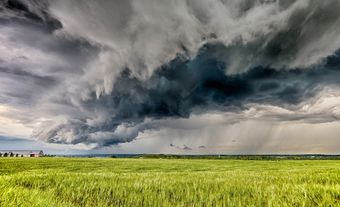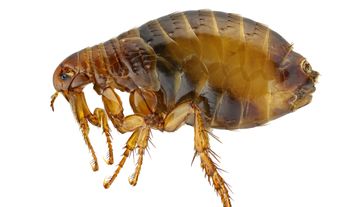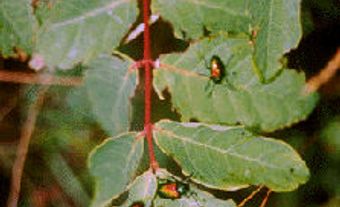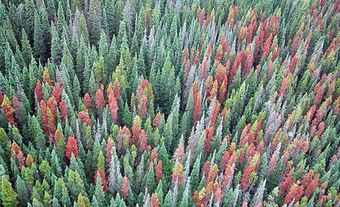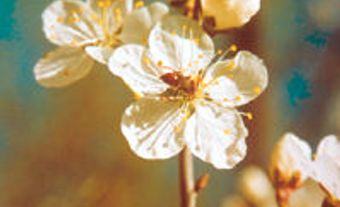Aphids are small, soft-bodied insects that suck plant sap. They belong to the order Hemiptera and the suborder Sternorrhyncha (along with whiteflies, scale insects and jumping plant lice). Aphids belong to the family Aphididae, although many species in the families Adelgidae and Phylloxeridae are also commonly called aphids. Over 5,000 species are known worldwide, over 800 of which are found in Canada. Aphids originated at least 250 million years ago, but most of their present diversity arose in the last 66 million years alongside flowering plants. Their great success as a group has made them familiar and prolific pests of gardens and agricultural crops.

Description
Aphids are small, pear-shaped, soft-bodied insects with long thin antennae and a pair of tubelike structures projecting off the rear of the abdomen, called cornicles. Their mouthparts are modified into a pointed, beak-like structure for piercing plant tissues and sucking up fluids. They measure up to 6 mm in length. Aphids often have both winged and wingless forms within the same species. Winged individuals have a large pair of front wings and smaller pair of hind wings, with few veins. They are very often green in colour, but may be yellow, pink, red, blue, purple, brown, or black. Some species are called woolly aphids because they produce a fuzzy, white, waxy substance that covers their bodies.
Distribution and Habitat
Aphids are found worldwide and feed on all different types of plants, but they are most numerous and diverse in temperate regions. This is unlike most other groups of living organisms, which typically have more species in the tropics than in temperate regions. This unusual pattern may be due to the fact that aphids are inefficient at finding their host plants. Although there are fewer plant species in temperate regions than in the tropics, they tend to be more common and widespread, making them easier to locate on average. Other insects that follow a similar pattern include sawflies and some families of flies.
Reproduction and Development
The life cycles of aphids can be quite complex, alternating between asexual and sexual reproduction as well as between different host plants. Most species overwinter as fertilized eggs, which hatch in the spring into wingless females. These females reproduce asexually (they do not mate with a male) and give birth to living female offspring, which develop internally. Throughout the spring and early summer, several short generations of wingless, asexual females may occur. When the host plant becomes crowded, winged females start to appear, which migrate to a new plant. This cycle continues until a sexually reproducing generation of winged males and females eventually shows up in the late summer. This reproductive generation migrates to new plants, where they mate to produce fertilized eggs. Many aphids feed on the same host plant species for their entire life cycle, but in some species the first winged female generation migrates to an alternate host plant, where asexual reproduction continues until late summer. In such species, the sexually reproducing generation migrates back to the original, springtime host plant species to mate and lay eggs. These fertilized eggs then overwinter, continuing the cycle next spring.
The asexual generations of aphids are among the shortest of all insects: as few as five days. In addition, females are born with the next generation already developing inside of them. This means that aphid populations can grow very large, very quickly. For example, a single aphid theoretically has the potential to produce more than 600 billion descendants in one season. They can also travel great distances on wind currents (up to 1,300 km), allowing them to quickly spread and successfully establish new populations. Their numbers are mostly kept under control by a variety of predators and parasites.
Ecology
Aphids feed on sap from the stems, leaves, or sometimes roots of plants, using their beak-like mouthparts to pierce the tissues and suck out the fluid. They primarily feed on a type of sap called phloem, which is sugar-rich but nutrient-poor, being particularly low in nitrogen and essential amino acids. They are able to subsist on such a diet thanks to a beneficial gut bacterium (Buchnera aphidicola), which improves the nutritional value of the plant sap they consume.
While many aphids feed externally, numerous species form galls. Galls are abnormal growths of plant tissue that aphids live inside of and feed upon. These galls, which are often noticeably misshapen and miscolored, may be formed on the leaves, buds, or petioles of aphids’ host plants. Familiar examples include elm cockscomb gall (caused by the aphid Colopha ulmicola) and Eastern spruce gall (caused by the pineapple gall adelgid, Adelges abietis).

Predators of aphids include lady beetles, lacewings, grasshoppers, larval syrphid flies and aphid wasps. They are also attacked by a variety of parasitoid wasps (especially braconid wasps in the subfamily Aphidiinae) (see Wasps). Some aphids release alarm pheromones when attacked, causing others on the same plant to escape by dropping to the ground.
Aphids produce a sugar- and protein-rich excrement called honeydew, which may be collected by other insects, especially ants. This has resulted in mutually-beneficial relationships between certain species of aphids and ants: the aphids provide food, while the ants provide protection, transportation, and shelter, in some cases carrying the aphids’ eggs into their nests for the winter.
Interaction with Humans
Aphids are major pests of gardens and agricultural crops, especially when their populations grow large. Damage to plants can include distorted, curled, or wilted leaves, stunted or distorted growth, and the formation of galls. Because they feed by piercing plant tissues, aphids can also transmit certain viruses between plants. Aphids damage a variety of commercial crops, including apples, squash, melons, beans, cucumbers, beets, potatoes and cabbage. Their sticky honeydew can also become a nuisance when it coats surfaces and objects beneath affected plants.
It is not always necessary to control aphids. In fact, they can be a valuable resource for other beneficial insects, either as prey or for the honeydew they produce. When necessary, they can be controlled by monitoring and removal early in the season. Other control methods could include using biological control, for example by releasing commercially available lady beetles and parasitoid wasps (see Wasps). Insecticides are generally discouraged, as they can kill beneficial insects along with aphids. In addition, aphids commonly develop resistance to commercial insecticides (see Pesticide). Small infestations on garden plants can usually be managed by spraying the insects with a dilute solution of water and soap.

 Share on Facebook
Share on Facebook Share on X
Share on X Share by Email
Share by Email Share on Google Classroom
Share on Google Classroom




